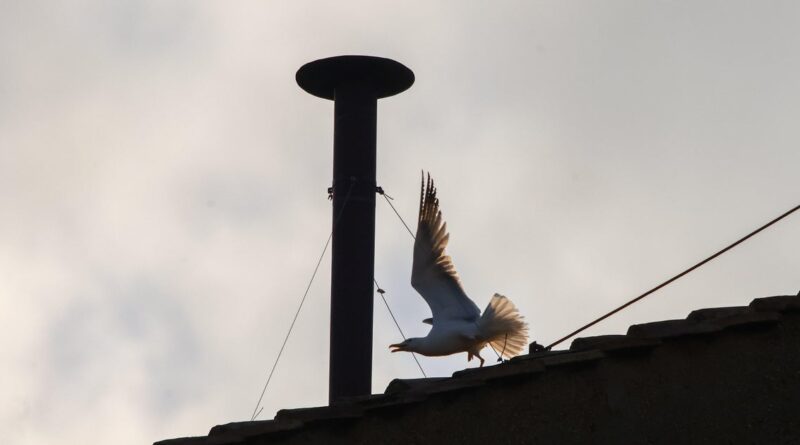The conclave’s black and white smoke indicates if there’s a new pope. Here’s why the tradition exists.
Black smoke rising from the Sistine Chapel chimney on Wednesday and again Thursday morning indicated that a new pope had not yet been chosen to replace Pope Francis.
Using smoke to communicate to the public whether a new pope has been elected is somewhat a recent tradition for the Catholic Church. Cardinal electors in the conclave, which originates from a Latin word meaning “with key,” are locked away with no contact to the outside world. So they use one of the oldest methods of long-distance communication: smoke signals.
What black and white smoke means
After the cardinals’ votes are counted, the paper ballots are burned in a stove in the Sistine Chapel. Black smoke emerging from the chimney means the world’s 1.4 billion Catholics don’t yet have a new pope. White smoke means the cardinals have chosen a new leader of the church.
Why the Vatican uses smoke to announce a pope
Smoke signals have been used for communication for millennia, Clare Johnson, professor of Liturgical Studies and Sacramental Theology at Australian Catholic University wrote in an article published in The Conversation. They have been used as a warning, a call to gather or to transmit news — and many Indigenous peoples use sophisticated techniques to indicate specific messages.
“These techniques can include changing the location of the fire (such as halfway up or at the top of a hill), adjusting the colour of smoke (using different types of foliage or damp/dry foliage) and the interruption or diversion of the smoke column at different intervals to produce particular patterns of smoke,” Johnson wrote.
Cardinals of the conclave have been burning ballots since at least 1417, according to the professor, but it wasn’t until the 18th century that the Sistine Chapel had its first chimney installed. After that, smoke at certain times meant a new pope had not been elected and the absence of smoke indicated that the was a new pope, according to Johnson.
The first time white smoke was the indicator that a new pope was elected was in 1914. The previous pope, Pius X, had mandated in 1904 that all papers related to the election, not just the ballots, be burned, “thus producing a great deal more white smoke for the final ballot and making it truly visible,” historian Frederic J. Baumgartner wrote in his book, “Behind Locked Doors: A History of the Papal Elections.“
Johnson also noted, “A stereotypical association of the colour of the smoke — white (positive) and black (negative) — lies behind the use of the two contrasting smoke colours.”
How the conclave creates black and white smoke
Over the years, the conclave has used different methods to create black and white smoke.
After some confusion in past conclaves, including in 1958, when smoke first appeared white and then became darker, the conclave began using chemicals to get the proper color.
In 2013, former Vatican spokesperson Federico Lombardi revealed that the cardinals added cartridges containing potassium perchlorate, anthracene — a component of coal tar — and sulfur to the burned ballots to create black smoke. And if a new pope has been elected, potassium chlorate, lactose and chloroform resin would be added to produce white smoke.
Has a pope ever been elected on the first ballot?
It is possible for a pope to be elected on the first ballot, but a pope hasn’t received the two-third majority on the first ballot in recent elections.
The shortest conclave on record was in 1503, when it took the cardinals only 10 hours to choose Pope Pius III as the new pontiff. The late Pope Francis was elected in two days with five ballots and the two popes before him had been elected in two or three days.
The longest conclave on record dragged on for nearly three years. Pope Gregory X was finally elected in September of 1271 after about 1,000 days.
contributed to this report.

